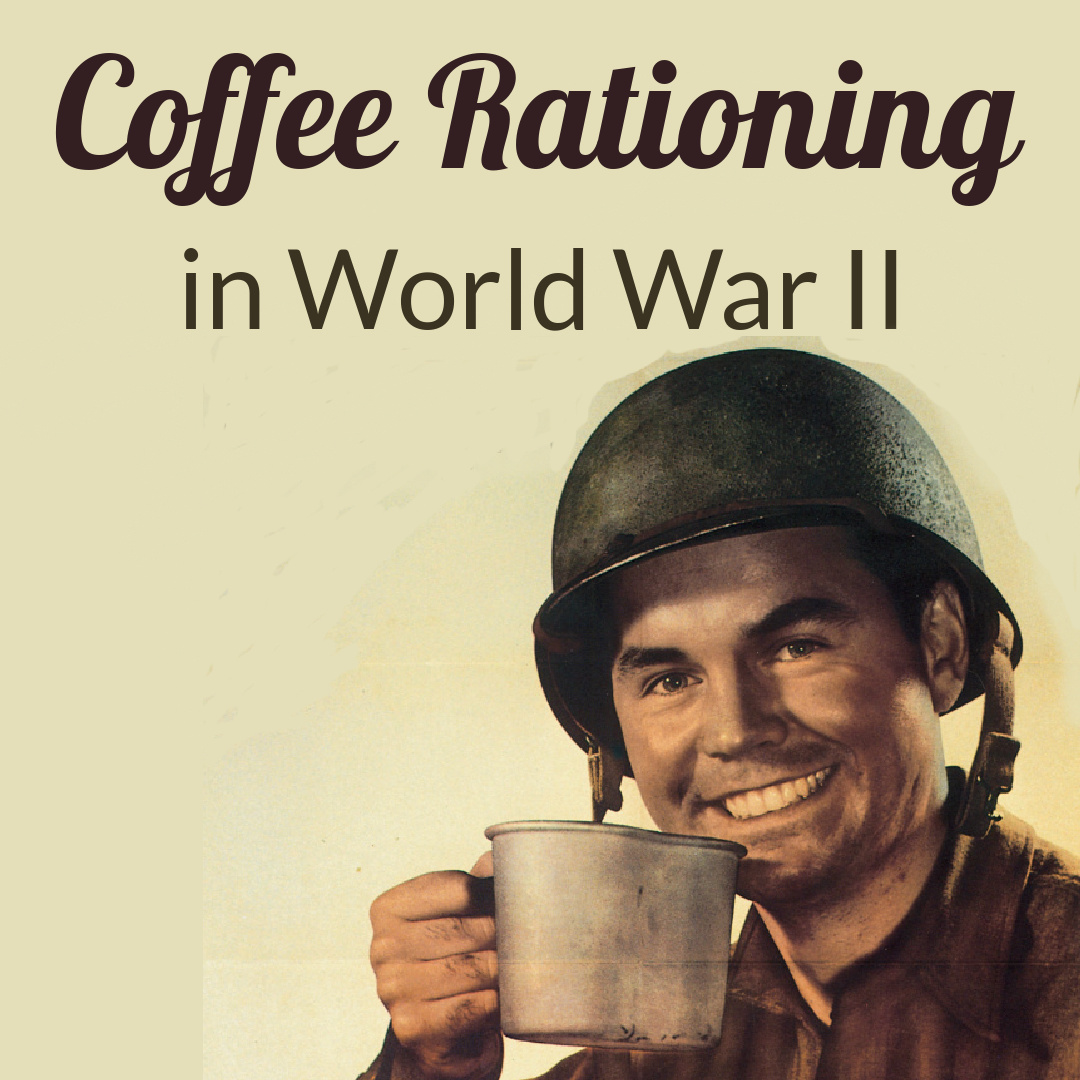From November 1942 to July 1943, coffee was subject to rationing. Initially, there were abundant coffee harvests in Central and South America as World War II commenced. However, due to U-boat attacks on cargo ships and the diversion of shipping capacity for the war effort, a significant portion of coffee couldn’t reach the United States. The coffee that did make it, including instant coffee, was primarily reserved for the military.
To address the shortage, the government first attempted to limit the amount of coffee roasters could use. In April 1942, they imposed a restriction of 75% of the previous year’s usage. In September, this limit was further reduced to 65%. Despite the decline in supply, consumer demand remained high, staying at pre-war levels of approximately 20 pounds per person per year. The only viable solution was for the Office of Price Administration (OPA) to introduce coffee rationing, which began at the end of November 1942.
To discourage hoarding, coffee sales were suspended for a week before rationing officially commenced on November 29, 1942. The Office of Price Administration (OPA) designated specific stamps in Ration Book One, which was commonly referred to as the “Sugar Book.” These stamps were used to control the purchase and distribution of various rationed goods during World War II, including sugar and other commodities like coffee. Each stamp had a specific value and could only be used to purchase a set quantity of the rationed item, helping to ensure equitable distribution and prevent hoarding during wartime scarcity.
The OPA designated specific stamps in Ration Book One (the “Sugar Book”) for coffee purchases. Initially, every adult over the age of 15 could obtain one pound of coffee every five weeks (equivalent to about 10.5 pounds per year). In February 1943, this ration was reduced to one pound every six weeks (just over 8.5 pounds per year), allowing for less than one cup of coffee per day for coffee drinkers, who were accustomed to one to two cups daily before rationing.
Life magazine published methods for stretching coffee during the time of coffee rationing in the United States. These methods were meant to help people make the most of the limited coffee available. Here are some of the methods for stretching coffee that were recommended:
- Reducing the amount of coffee in a cup: By using less coffee in each cup, individuals could serve more people with the available coffee. The idea was to make smaller, stronger cups of coffee, which could be diluted with hot water to reach the desired strength.
- “Double Dripping”: This method involved pouring hot water over used coffee grounds to extract additional flavor and caffeine. It could yield up to 30% more coffee from the same grounds. However, it was noted that this could make the coffee somewhat bitter.
- Adding chicory: Chicory is a caffeine-free herb with a slightly bittersweet taste. Life magazine suggested adding about half an ounce of chicory to one pound of coffee to stretch it by 30% without significantly altering the taste. Chicory was used as a coffee substitute during the coffee shortage.
- Other coffee substitutes: Life mentioned exploring other coffee substitutes made from roasted grains, such as barley. Postum, a popular coffee alternative made from roasted wheat bran, wheat, and molasses, was also discussed.
These methods were practical during the rationing period when coffee was in short supply. They aimed to make the most of the available coffee and provide consumers with strategies to continue enjoying their daily cup of coffee, albeit in a more economical and resourceful way.
Similar to other rationed goods, possessing a ration coupon did not guarantee the availability of coffee. Some grocers maintained lists of customers interested in purchasing coffee and contacted them when supplies arrived, while others had inconsistent stock. To prevent hoarding, some grocers broke the seals on vacuum-packed coffee, as exposure to air required quick consumption. Restaurants that previously offered unlimited coffee refills limited customers to a single cup during rationing.
The coffee rationing era concluded on July 28, 1943. In September 1944, the OPA raised the price of coffee to manage demand successfully, eliminating the need to reinstate coffee rationing.
*The views and opinions expressed on this website are solely those of the original authors and contributors. These views and opinions do not necessarily represent those of Spotter Up Magazine, the administrative staff, and/or any/all contributors to this site.

